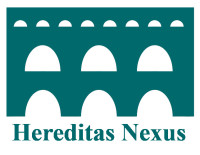 Reviewer: Wouter van Dijk
Reviewer: Wouter van Dijk
The Irish Citizen Army, Ann Matthews
Mercier Press, Cork 2014
ISBN: 978 1 78117159 2
Paperback, illustrated in black and white, with appendices, notes, bibliography and index
254 pages
€ 13,49
The History of the Irish Citizen Army
In the story of the revolutionary period in Ireland in the years 1913-1923, the Irish Citizen Army (ICA) plays a modest but important role. The contribution of the ICA has remained underexposed for a long time in historiography. That has everything to do with the fact that in the years after the Easter Rising and the War of Independence, the socialist message of the organization was completely suppressed due to the political nationalism that was overpowering in the country at that time.
In recent years, however, a reversal has taken place and the role of the ICA in the independence efforts of the Irish nationalists is valued more. The beginning of the revolutionary period is not for nothing generally placed in 1913. This is not only because of the establishment of the Irish Volunteers but also because of the political-revolutionary agitation of workers' groups led by Jim Larkin and James Connolly, united in the Irish Transport and General Workers’ Union (ITGWU). The Dublin Lock-Out of 1913 and the establishment of the ICA for the protection of the striking workers in that period have contributed greatly to the atmosphere of unrest and revolution that got the city increasingly in its grip.
The contribution of the rather small ICA to the Easter Rising in 1916 was relatively large. Partly because the original plans of the conspirators in the Irish Republican Brotherhood (IRB) were nipped in the bud by orders from the alerted Volunteers-commander Eoin MacNeill and the uprising continued on a smaller scale than planned.
Matthews has in fact written the first popular-scientific monograph on the ICA with her book. Of course there were already the books of Fox and Robbins, but they can be seen much more as ego documents of the movement, one written on behalf of the organization, the other by a former member of the club. Matthews not only describes the well-known period of the militant workers' organization during the Lock-Out and the participation in the Easter Rising, but follows on until the disappearance of the ICA from history in the mid-1940s. Although the history of the organization after the revolutionary years is necessary for a complete description, there is little of interest from this period to notice. The ICA was plagued by internal struggles and in the years of the Interbellum became little more than a supporter of larger nationalist organizations.
Because the sources about the ICA were relatively scarce, Matthews had to combine a lot of information sources to give a complete picture of the organization. Important sources were the newspapers that Larkin and Connolly mainly filled; The Irish Worker and The Workers' Republic, and the statements of witnesses that were taken years after the events at the Bureau of Military History, in a kind of oral history project. The result is an entertaining book about the history of the ICA. Occasionally it relies a bit on quotations from statements made by those involved at the time, which affects readability, however, more books about the period suffer from this quality. It is definitely recommended for those who are interested in these turbulent years of Irish history. The ICA was more than a footnote in this history, Matthews has made clear with this book.
Wouter van Dijk
